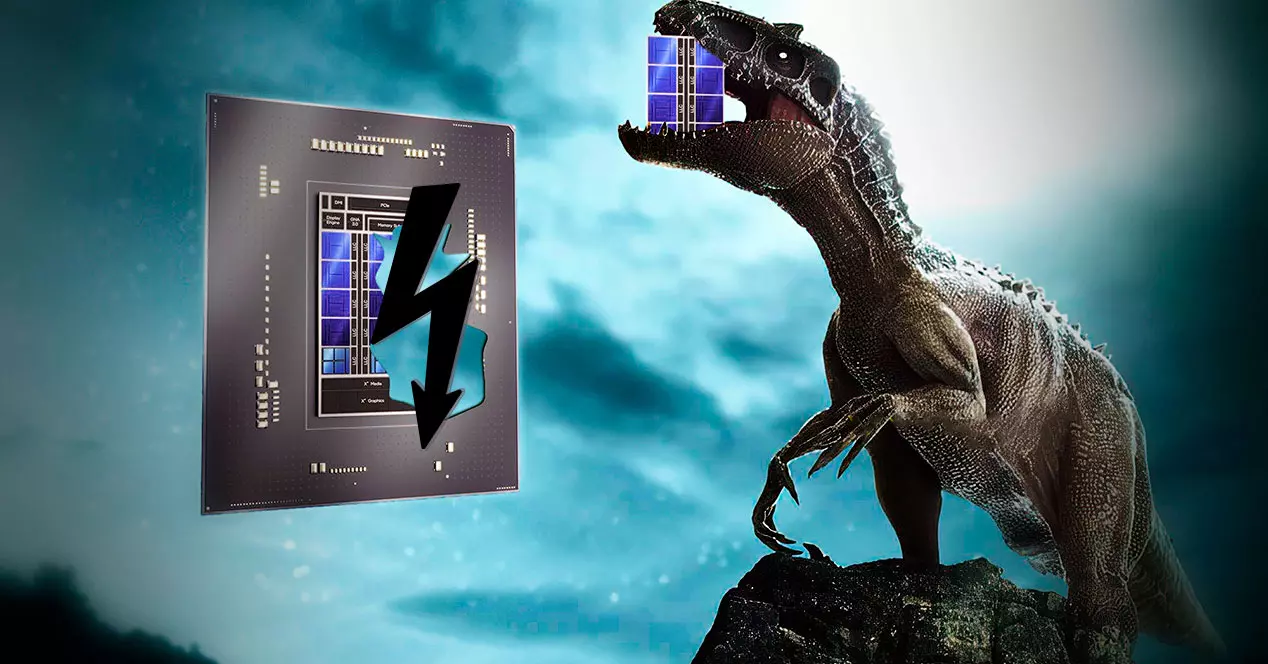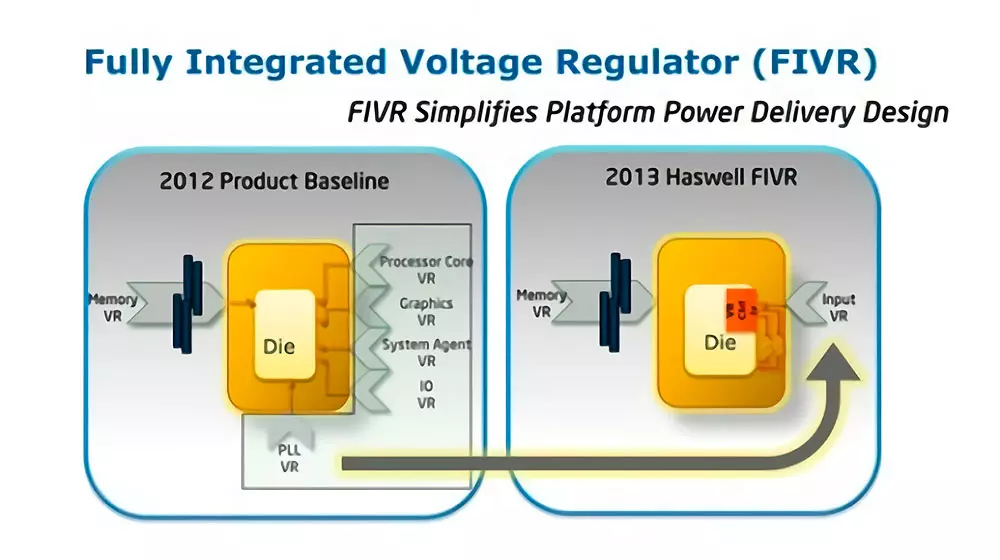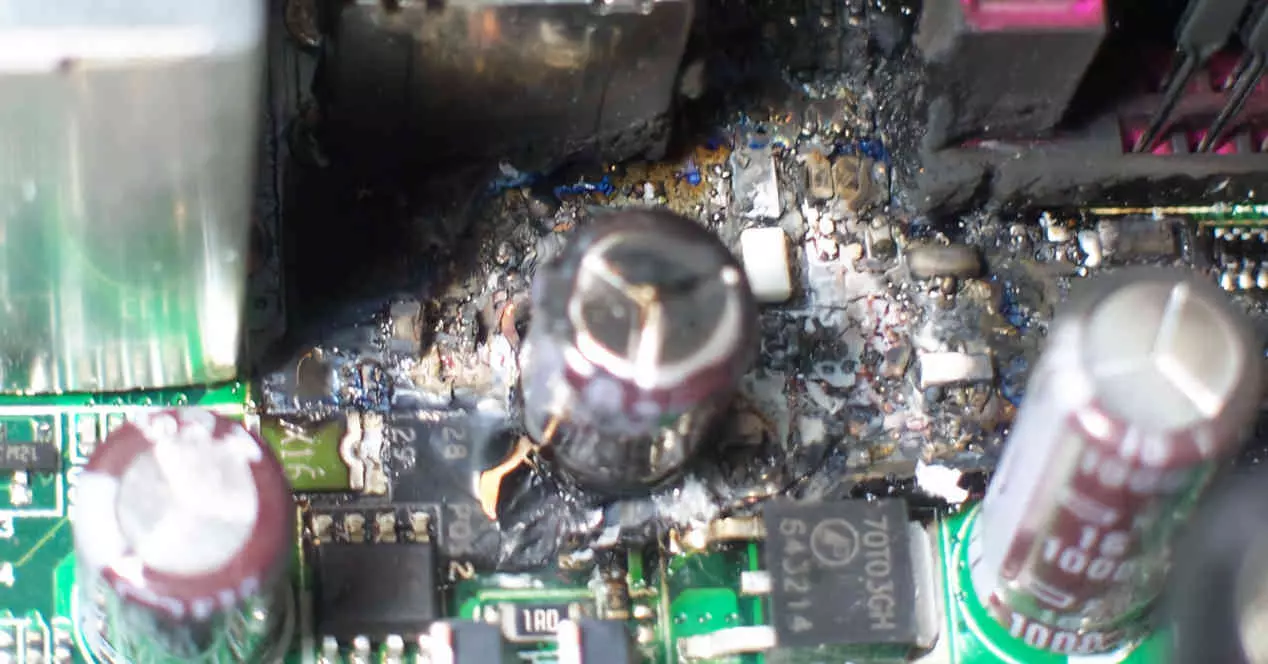
Intel has already confirmed its next architectures and manufacturing nodes for 2025 and as we saw, it is going to step on the accelerator in a brutal way, with minor improvements, yes, but at that rate there will be constant evolutions for consumption and performance. Alder Lake has been a bit of both, more from the performance side than the fuel side, so Raptor Lake will focus on efficiency. The latest rumors point to a 25% improvement in consumption, curiously bringing a feature already seen before and that they had to withdraw …
In this article, if something is going to be clear, it is precisely the Raptor Lake architecture that is not going to be a node improvement to slightly increase the density and the clock frequencies at the expense of the improvement in efficiency. The leaked reveals certain key improvements that are going to make things really difficult for AMD despite arriving with the 5nm of TSMC in droves: DLVR.
Intel brings voltage controller back into CPU: DLVR
As it sounds, or at least that is what is being presented in the filtered slides. To make memory with this technology it is necessary to remember that only two architectures obtained it: Haswell and Broadwell, both with success but curiously with criticism.
It is true that the advantages outweighed the disadvantages, but Intel did not have the bad press due to the null welding of the 4000 series, which was not the case in the 5000 and 6000 series HEDTs. FIVR Managing all the CPU voltages meant some extra watt of heat generated to the processor, but in return it had much improved efficiency and near-perfect control of all voltages, nailing every parameter.
Well, this returns in a more advanced way through a controller called Digital Linear Voltage Regulator or DLVR and that has been seen in a series of Intel patents. The novelty here is that the system is different from Haswell’s and is much more interesting.
The board driver is not dispensed with
The basic idea behind Raptor Lake’s new power delivery architecture proposal is to include a digital linear voltage regulator (DLVR) as a voltage clamp placing in parallel to the primary VR, reducing CPU VID and thereby also reducing processor core power consumption. pic.twitter.com/n7kwjwTY9C
– Underfox (@ Underfox3) August 19, 2021
The novelty as such is that in addition to being digital, apparently the voltage controller on the motherboard would not be suppressed, but DLVR is a second access digital controller with a very clear purpose: to reduce energy consumption by being an addition to Very simple and basic CPU.
Until now, voltage controllers are subject to changes in temperature, current, PCB layers, and supply lines, so regulating them is really tricky if what we want is a fine and constant voltage, without jitter or peaks. For this we use the LLCs, but it triggers the consumption and the temperature of the VRMs to end up returning a voltage through the board and directly to the CPU.
It’s not perfect, it’s not incredibly accurate, but it’s effective. DLVR now being inside the chip can calibrate, regulate and provide the cores and cache with protection against the voltage that comes from the board, improving the so-called drop and reducing peak consumption by up to 25% as the amperes consumed rise.
This is not linear and has a logical limit, which is encrypted at 40 amps, or what is the same, 480 watts on the 12V line. From there the calibration and adjustment of the low power until zero at 70 amps, figures impossible for mortals and that only professional overclockers will have.
The patents also show that DLVR it could lower the voltage to 160 mV reaching 40 amps and from there it would lower said reduction to zero with 70A. This means that the reduction could be between a 20 or 25% compared to current CPU power designs, as such a drop right now is unthinkable with undervolt.
What does this data imply? Well, thanks to a lower voltage, Intel has more thermal margin to increase the frequency and thereby gain performance, specifically it is said that a drop in twenty-one% translates into an increase in 7% yield. Therefore, Zen 4 is not going to have an easy time in front of Raptor Lake if this is true.




